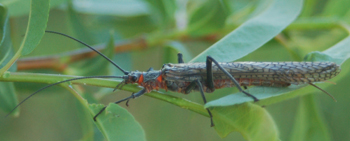Fishing Big Bugs by Patrick Murphy.
Tips on Fly Fishing The Stonefly Hatch by Patrick Murphy.
by Chris Nielsen (Admin) Admin • April 07, 2019 in Writings by Our Customers
Fly Fishing Stoneflies!

The promise that comes with spring is both manifold and specific – and in this case I am talking about one big bug: Pteronarcys californica (TAIR-uh-NAR-seez KAL-ih-FOR-nih-kuh) … one of the most prolific and common stonefly species in the West. These bugs are called salmon flies for the pinkish underbelly color of the adult.
That bug can both fill and haunt an angler’s dreams. For those lucky enough to be near a river that provides a reliable salmon fly hatch, well, count your blessings!

An abundance of “stones” in your local fishery is a good sign the water is clean and provides a great environment for healthy bugs and trout (and if big salmon flies are present, their cousins – the giant golden stones, usually share the neighborhood). This doubles your chance for success by casting large dry flies (sizes 4, 6 and 8) to trout that are looking up for stonefly sustenance. Floating stoneflies often entice big trout to feed on the surface.
We load our boxes with those big-fly beauties, and we often have a specific fly box just to house our collection of artificial stones. Using a “dropper” off the big dry is often employed. Two chances at a trout are better than one, right?
Depending on where you plan to fish, the size 4 and 6 salmon flies are mostly out April through July when the nymphs crawl out of the river and emerge.
Even the most casual observer will see the dried nymphal shucks on bridge abutments, willows and foliage and rocks that line the river. During peak hatch times, you will encounter scores of the winged adults crawling on stream-side vegetation. When an adult giant stonefly lands on you, you notice it – but oddly, after a while, you get used to these two-inch bugs on and around you (they don’t bite).
Getting to what looks like a good piece of water to cast your fly is always tempting, and one advantage of the stonefly emergence is the bugs migrate to the water’s edge to continue their life cycles – and the fish follow the bugs. So, fishing upstream six inches to a few feet off the riverbank will do well to catch trout when the river swells with rising runoff. Fishing from a boat has great advantages as you can freely fish and cast. Of course, if you are the one who is not rowing at the time!
I like to use a 9-foot leader that tapers to 3x, with about a foot of 3x or 2x tippet when using these dries. My personal favorites are the old-school Stimulator in orange or golden yellow, along with a stonefly nymph imitation (not too heavily weighted) for the dropper.
The great thing about our sport is there are plenty of choices, advice or firm opinions about the right bug to tie on the end of your leader. That just makes fly fishing more fun. Fill your boxes and get out there and make some memories!

